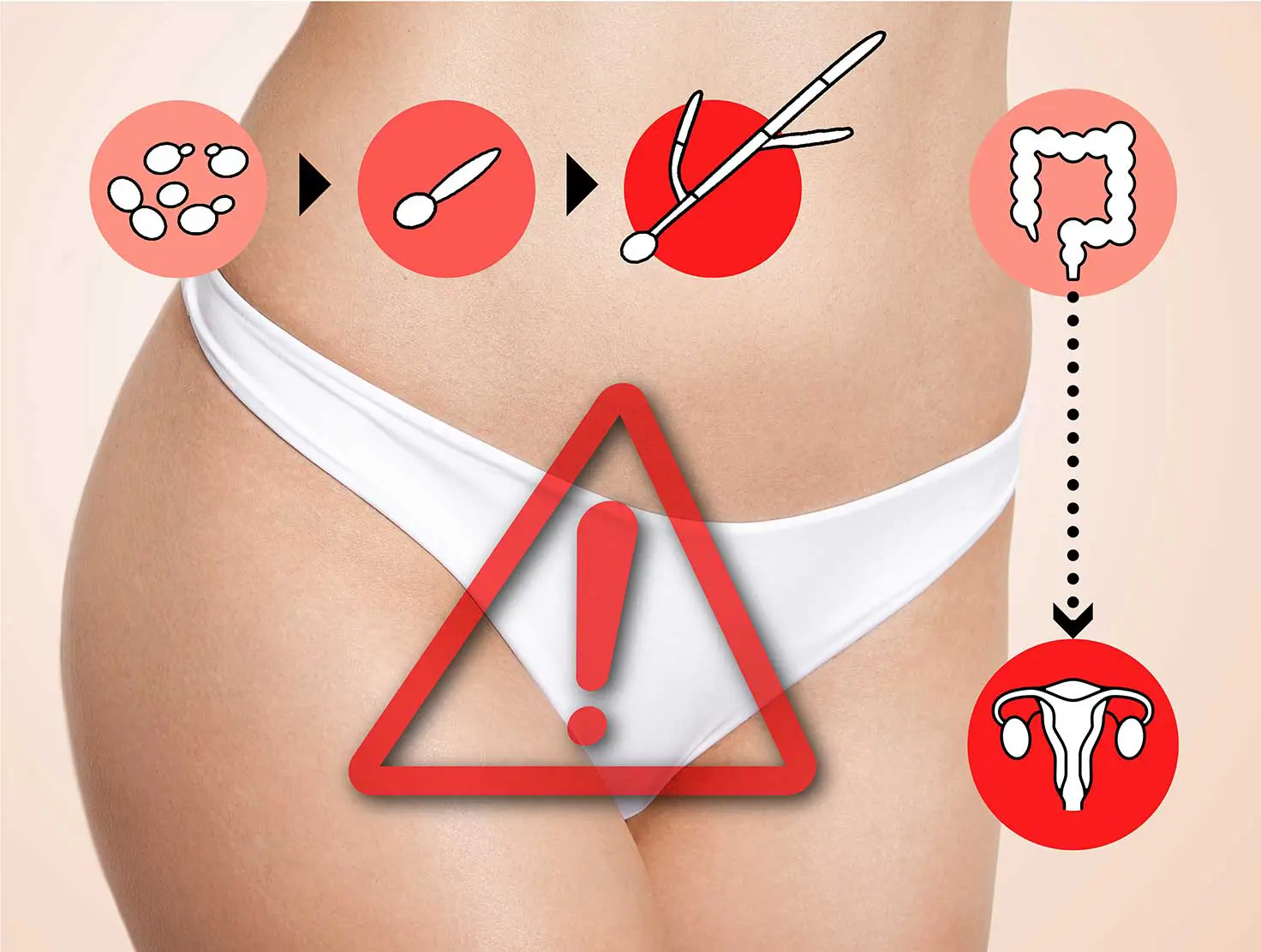VAGINAL CANDIDIASIS: GUT DYSBIOSIS COULD BE THE ORIGIN

Candida: from gut commensal to opportunistic pathogen
Candida is a yeast, i.e. a single-celled organism belonging to the kingdom of fungi, which usually lives as commensal in the gut and under normal conditions does no harm. However, it can become pathogenic when one or more of the following imbalances occur in the body:
- damage to the intestinal mucosal barrier
- immune dysfunction
- dysbiosis of the gut microbiota
Under these circumstances Candida can change its appearance from the planktonic, non-invasive form to the hyphal, invasive form. In addition, it can translocate from the gut to the vaginal environment, causing a vulvovaginal Candida infection (or vaginal candidiasis) that can manifest itself with symptoms such as:
- Itching
- Burning
- Dense, lumpy, whitish secretions
- Reddening
- Pain during sexual intercourse
Gut eubiosis and the presence of butyrate-producing bacteria as protection against candidiasis
As already mentioned, Candida only becomes aggressive when it finds the ideal conditions to do so. These are given by several factors, including the use of antibiotics that alter the balance of the bacterial flora, a weakened immune system, excessive humidity and heat, diabetes, pregnancy and the use of oral contraceptives.
A Candida infection must be properly diagnosed and treated to avoid complications and re-occurrences. If vaginal Candida infections are recurrent, the causes of this disorder should be investigated more thoroughly, and the status of the patient’s gut microbiota should be considered.
Recent scientific studies observe that a reduction in butyrate-producing bacteria (e.g. Clostridia) may predispose to Candida infections and that, conversely, the presence of bacteria capable of producing endogenous butyrate may inhibit Candida growth and germination.
Maintaining a balance in one’s gut microbiota, preserving a state of eubiosis, and supplementing with butyrate-producing bacteria is a good strategy to counteract the progression of Candida to its infectious form, particularly after the use of antibiotics that can kill both harmful and beneficial bacteria, altering the balance of the microbiota.
Butyrate for combating Candida infections
In the study Sodium butyrate inhibits pathogenic yeast growth and enhances the functions of macrophages
the authors tested the efficacy of butyrate, a short-chain fatty acid produced in the intestine by various bacteria including Clostridium butyricum, in inhibiting Candida proliferation in the intestine and
reducing the ability of this fungus to produce biofilms.
Using in vitro analysis, various concentrations of sodium butyrate were inoculated into plates containing cultures of Candida albicans and Candida parapsilosis. The results showed that as the concentrations of butyrate used increased, there was a clear reduction in both the growth rate of Candida strains and the formation of biofilm by them, and very impactful results were already evident with low concentrations of butyrate.
The study concludes that by highlighting the properties of butyrate, it could be used as a contrast agent in cases of Candida infection.
* Mancabelli L, Mancino W, Lugli GA, Argentini C, Longhi G, Milani C, Viappiani A, Anzalone R, Bernasconi S, van Sinderen D, Ventura M, Turroni F. Amoxicillin-Clavulanic Acid Resistance in the Genus Bifidobacterium. Appl Environ Microbiol. 2021 Mar 11;87(7):e03137-20. doi: 10.1128/AEM.03137-20. PMID: 33483308; PMCID: PMC8091617.
